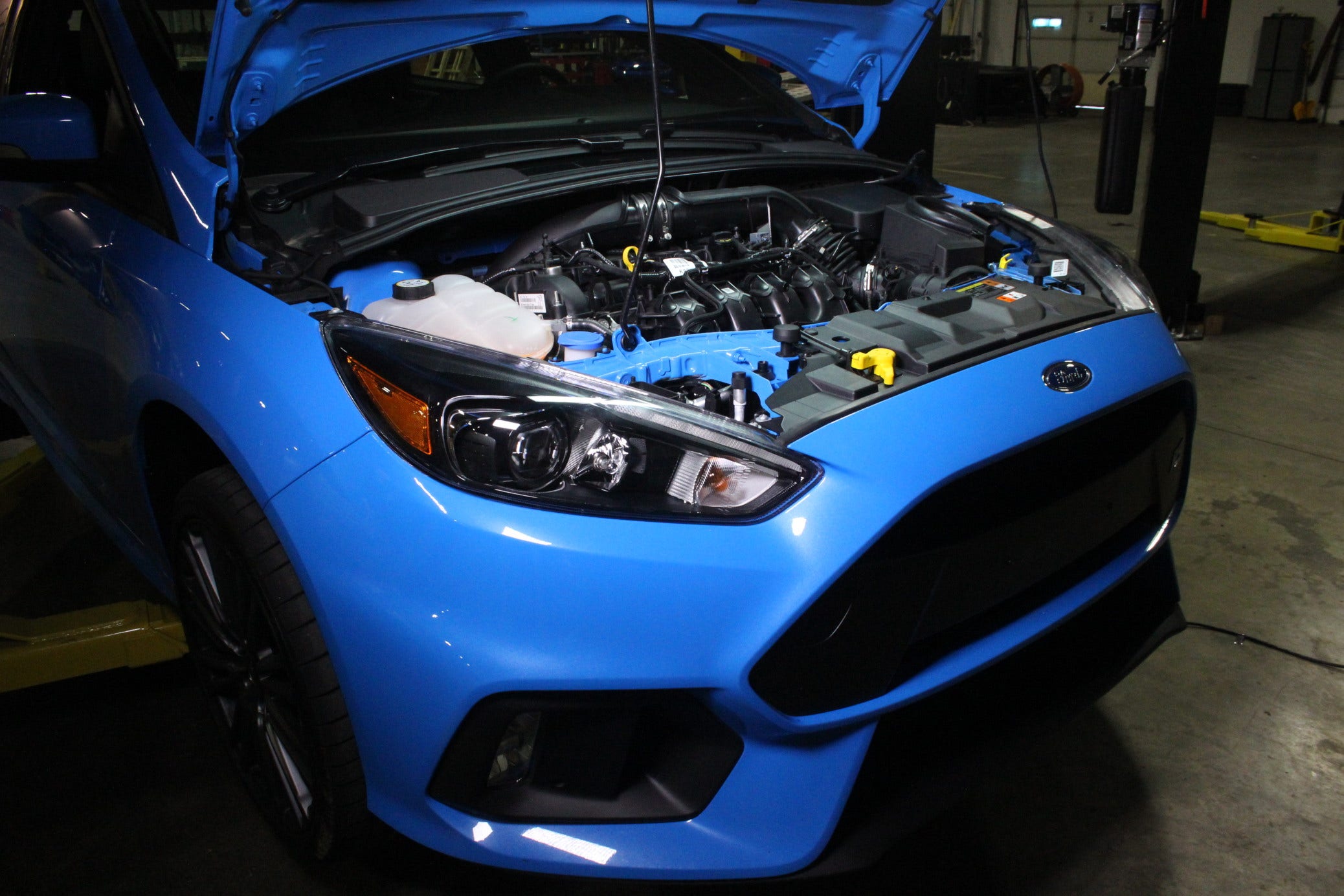
Gotta Keep em' Separated - Catch Can R&D, Part 1: Stock Review
The Focus RS is a big hit at the Mishimoto headquarters, and we want to make sure to protect our newest addition. If you missed Kyle Mohan testing out the Focus RS drift mode, check out our Focus RS Drift Video. Luckily one of the first projects up to bat is our direct-fit baffled oil catch can. We know that the necessity of an oil catch can is a hotly debated topic among many car communities, and the Focus RS is no exception. From previous projects and research online, we've learned that blow-by is a real presence in these EcoBoost engines.
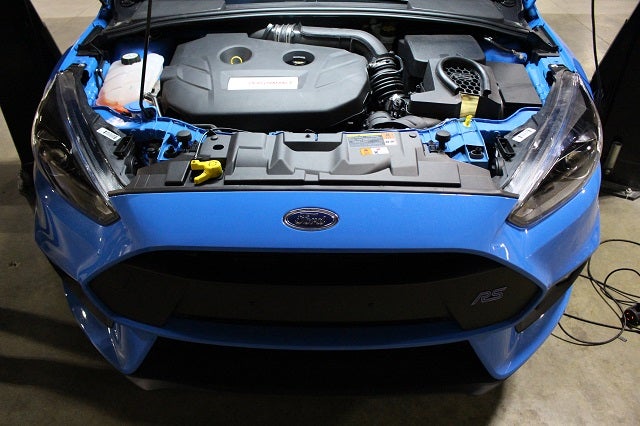
Focus RS Oil Catch Can R&D
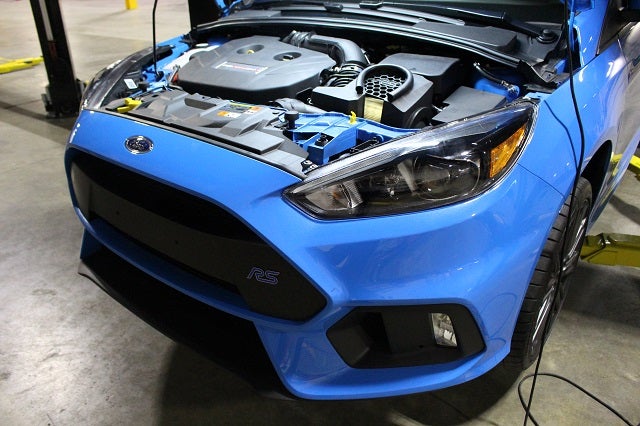
Focus RS Catch Can R&D
Catch Can 101
What is this notorious blow-by that I speak of? Blow-by is the unburnt oil and fuel mixture that blows past the piston and into the crankcase. Modern engines have a CCV (Crank Case Ventilation) system for emissions purposes. The CCV directs the blow-by back into the intake to be burned in the combustion chamber. Unfortunately, on its way back into the engine, blow-by leaves a nice oily coating on the intake tract, throttle body, and valves. The CCV system is good for the environment, but not ideal for engines. Catch cans, if used properly, are both environmentally and engine friendly. The catch can will be installed in the PCV (positive crankcase ventilation) line, which is notorious for carrying oil back into the intake system. By interfering with our catch can, we will trap the excess oil in the can and send fresh air back into the intake.
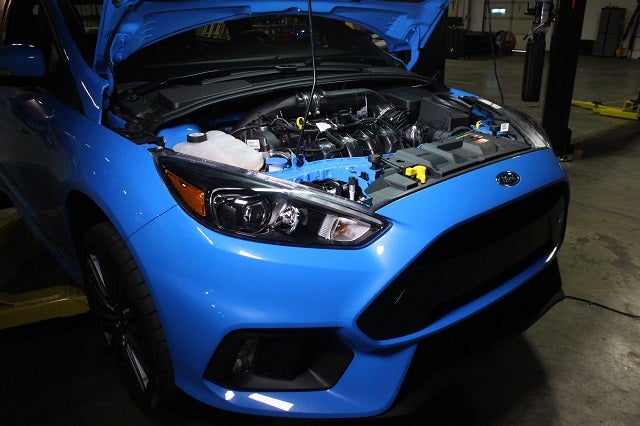
Focus RS Oil Catch Can R&D
Will a catch can prevent carbon buildup?
On direct-injected vehicles, installing a catch can to trap oil before it has a chance to introduce itself to your intake will prevent a majority of carbon buildup on your valves. Direct-injection engines, as opposed to port-injected engines, are more prone to carbon buildup because in a direct-injected engine, the fuel is being introduced directly into the combustion chamber without first washing over the valves. So, although it will not prevent buildup altogether, it will combat the majority of it.
Why wouldn't Ford have incorporated one from the factory?
Although Ford does not have a factory catch can in the sense that we are familiar with, they do have an oil separator on the side of the engine block. While this may help combat the issue of blow-by, we have a hunch that we will still see oil buildup in our catch can even with the factory oil separator. (Not to worry, our hunches are always put to the test!) Adding a more complex, and therefore more effective, catch can system from the factory would add another maintenance item that not all are willing or able to do, which is why manufacturers may have left them off.
Does the RS need a catch can?
This is the question of the hour. Given the Focus RS's family history of blow-by, we are going with a resounding "Yes'. Previous testing revealed large amounts of blow-by collected with the Focus ST and EcoBoost Mustang. Based on the similarities between both of those engine setups, it is safe to assume we will see a good amount of blow-by during our Focus RS testing. Sure we can speculate as to why you should have a catch can installed on your RS, but there is nothing like actual data. So enough talking; we are headed back to our R&D facility to rig up a catch can on the RS for some actual data, stay tuned!
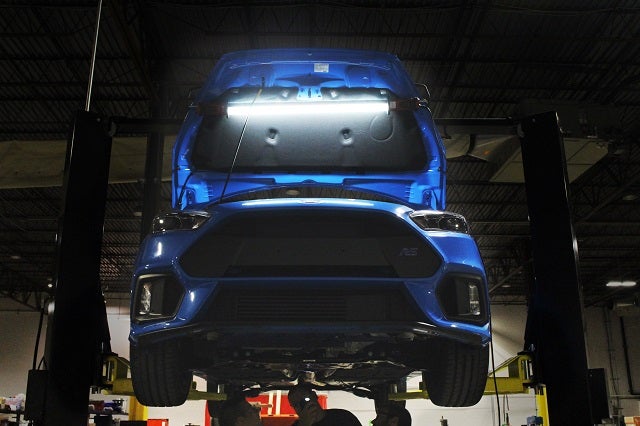
Development on the Focus RS catch can
Coming Up!
We will explore in depth the direct-fit catch can setup for the RS and how we intend to test it. To read more about Mishimoto's Focus RS projects, take a look at our Engineering Blog. If you would like to know more about the notorious blow-by, check out our complete write up on Blow-By 101. In the meantime, let us know what you think about our catch can plans in the comments below!
Thanks for reading!
-Sara









